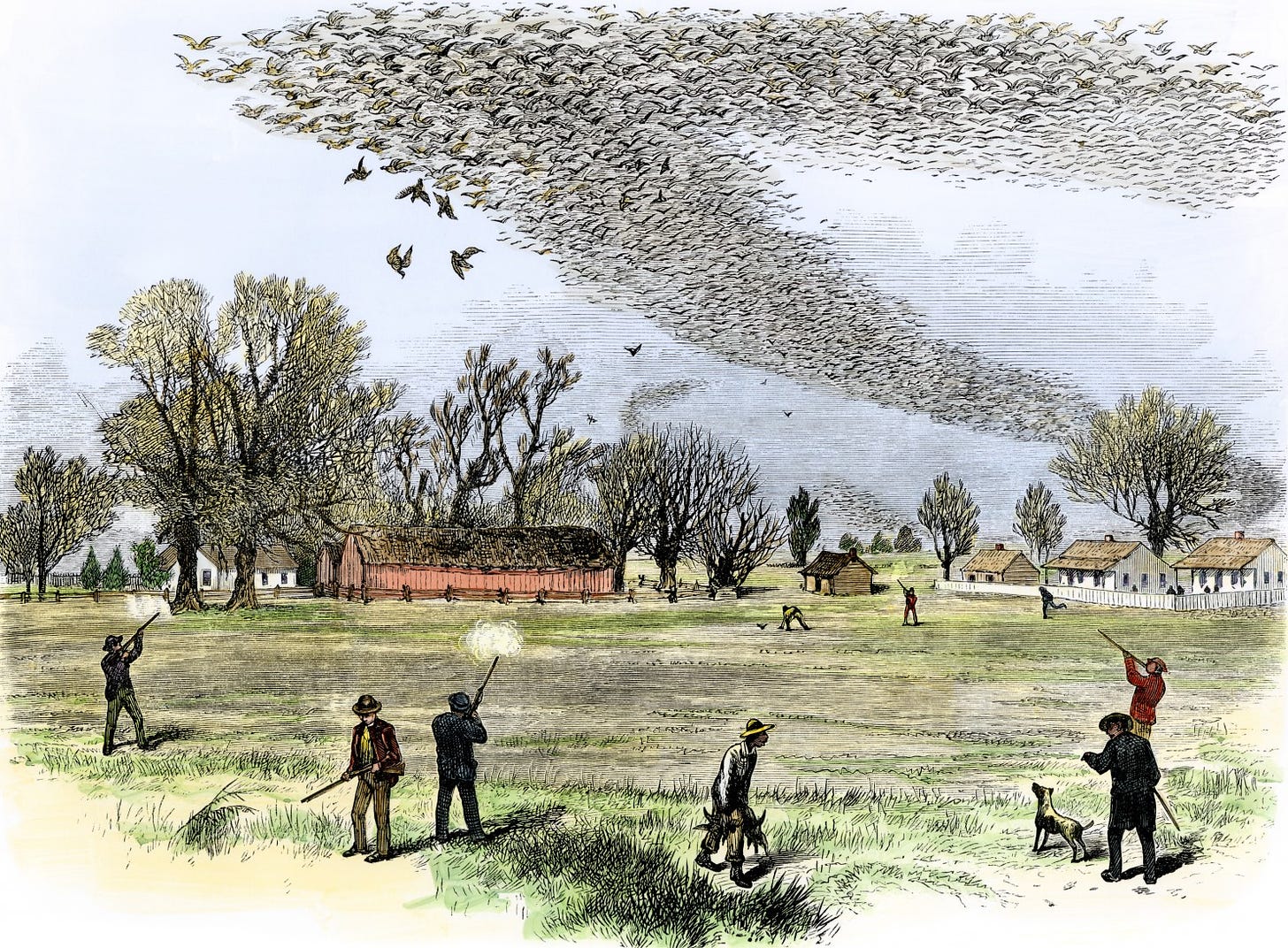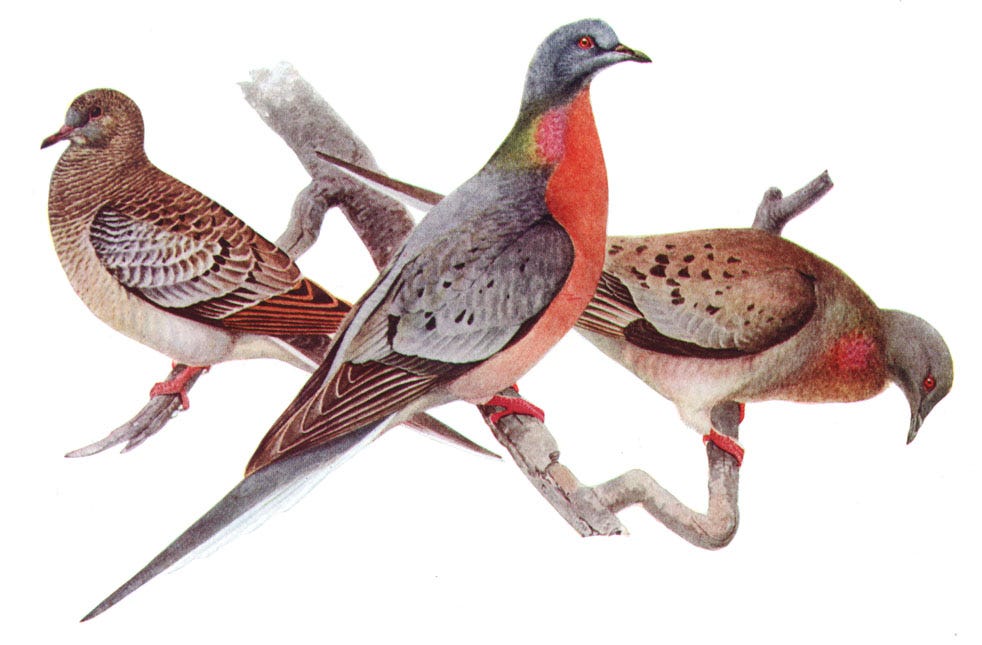The Link Between Genetic Paucity and Extinction
Consider the dodo. When I asked a bunch of my friends on social media to contemplate it, the conversation ranged from 'we can extract DNA from museum specimens? Cool! Bring back the dodo!" to "I hear dodos didn't actually taste that good. Anyone have a recipe?" Which is a testament to human nature and the level of snark I enjoy around me, really. People eating tasty animals gets blamed for extinctions fairly often, and it's a theme in most elementary school science texts. But what can we learn from the new techniques for looking at the genomes of extinct animals? Besides the ability to 'Jurassic Park' them, that is, which I'll get back to.
My interest in the dodo was sparked by an article on the genome of the passenger pigeon. Recent studies done using DNA extracted from museum specimens have revealed that despite huge populations of the pigeons, their genetic diversity was very low. Theories about their extinction have revolved around this lack of diversity, because, after all, no matter how many birds the human harvesters took, there should have been small surviving populations that could have lingered and possibly rebuilt in population (although there are other variables, but that's another post). This didn't happen, and scientists wanted to know why. With small populations of rare animals - for instance, the Tasmanian Wolf, or the dodo - it seems clear that you could kill enough of them to leave insufficient breeding population. But not the pigeons. However, the science points to a lack of ability to be resilient that doomed the passenger pigeon when the population was sharply reduced in a very short time.

The commonly held belief is that humans killed all the pigeons which isn't quite right.
The genetic resilience of a population is what can keep it going even when the numbers dip low. Consider the polar bear (and don't consider recipes - the bear's liver is toxic!) which was recently considered on the brink of extinction. Recent genomic analysis indicates that the bears endearingly adopt cubs that are not their own, but more importantly to population endurance, do not inbreed often. Populations of bears have, in some places, doubled. "Terry Audla, the president of Inuit Tapiriit Kanatami, Canada’s national Inuit organization, says that when it comes to really understanding how healthy the polar bear population is, it makes no sense to pit the feelings and hunches of far-flung conservationists against the direct observations of local people who deal with the bears all the time. As far as overhunting goes, says Audla, “if you’re reliant on something as a source of food, you’re going to make darn sure that you’re keeping that source healthy.”
Humans who hunt have been blamed for extinctions since awareness over wildlife populations became a fad. Clearly, there are links. However, as Terry Audla points out above, hunters who relied on a foodsource are unlikely to deliberately kill all the things. Care is taken to harvest animals who won't impact the population as a whole - hence traditions over taking the males, the infirm, and thinning herds when they got too large. Hunters understood disease and epidemics before germ theory was fully solidified, because they could see the cycles in the wild things. I've seen it in Alaskan snowshoe hares - one year, you see them everywhere. The next, they are sick, the next, they are very few, and then more, and the cycle builds again. Infectious disease has a huge impact on any animal population, particularly one that is crowded which allows for easy transmission of germs. When a population is stricken, and gets small enough to lose their genetic resilience, extinction is a looming problem for the species.
But what about the dodo? Populations of animals threatened with extinction clearly show a loss of genetic diversity. Even if we could revive the dodo, could we do so with enough variation in genes to support a population? Probably not, because part of the reason the bird were driven to extinction in the first place was a lack of diversity and ability to adapt quickly to changes. Nature is cold and cruel and if you don't adapt, you die. Jurassic Park is an interesting premise, but highly unlikely to succeed. Attempts to conserve and spread species now are already stymied by genomes... if you raise animals in captivity, you change their genes. Then when you release them, they hit the reality of the wild, and die. If you try to raise them in 'wild' conditions, it might work, but it's expensive and difficult.
Will we ever revive an extinct creature? Probably. Will we be able to revive a viable breeding population? Well, not with the technology and understanding we have now. We just don't know enough about genes yet to deliberately introduce adaptations and diversity into an existing genome that would then survive the wild. Can we get there? I'm not sure we'd bother. Most of the extinct critters we worry over - or the nearly extinct - are in some way endearing to the human population. The wooly mammoth is cute, the dodo is beloved because of Lewis Carroll, the Tasmanian Wolf just looks cool... but few humans care about fairy shrimp or freshwater mussels. That, and despite what most gradeschoolers are taught, extinction is a natural process. Genetic paucity leads to dead ends for species, but there are other species who are cruising along the genetic interstate with their fur/feathers/scales whipping in the wind and the sun on their faces.

work by Louis Assiz Fuentes




